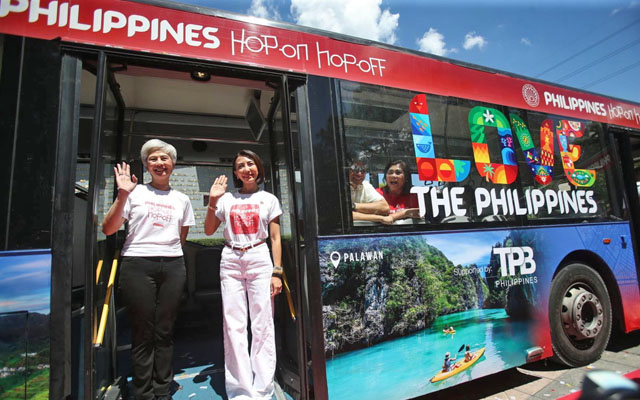Why Pick Transit Advertising Philippines for Your Brand
Why Pick Transit Advertising Philippines for Your Brand
Blog Article
Exactly How Transit Marketing Can Change Public Transportation Spaces Into Dynamic Advertising Operatings Systems
Transportation advertising and marketing holds considerable possibility to redefine public transport spaces into dynamic advertising and marketing systems that notify and involve. By using cutting-edge styles such as digital display screens and interactive stands, brands can not only get to a varied target market however likewise improve the total traveler experience. This strategy creates a special possibility for brands to get in touch with customers in a setup that is typically forgotten. As we explore the multifaceted benefits and progressing approaches of transit advertising, it increases the concern of just how this makeover could redefine our interactions with both brands and the metropolitan setting.
Benefits of Transportation Advertising And Marketing

Additionally, transportation marketing is extremely cost-effective contrasted to standard media. It allows marketers to achieve high impacts at reduced costs, taking full advantage of roi. The restricted audience of travelers offers an opportunity for brand names to communicate their messages to individuals that are commonly receptive during their travel times.
In addition, the vibrant nature of transit advertising permits projects to be updated frequently, guaranteeing that messaging remains pertinent and timely. This versatility can be critical in reacting to market fads or marketing events, keeping the brand top-of-mind for customers. Last but not least, the prevalent presence of transportation advertising adds to brand name recall; repeated exposure within acquainted travel contexts enhances brand awareness and promotes consumer loyalty, inevitably driving sales and improving brand name credibility.
Sorts Of Transit Advertising And Marketing
Mass transit systems give numerous formats for marketing, each satisfying various advertising strategies and target market interaction approaches. One noticeable type is external bus and train wraps, which cover the entire vehicle and develop a mobile signboard impact, permitting for high visibility in metropolitan settings. These covers can catch focus as they pass through active streets, reaching a varied audience.
One more preferred format is indoor marketing, which includes posters, electronic displays, and ads on transportation seats. These placements engage guests during their trip, reinforcing brand messaging in a constrained space. Digital shows, particularly, supply the advantage of vibrant content, allowing marketers to update messages in real-time.
Station marketing is likewise substantial, including posters, banners, and interactive booths within transit terminals. These advertisements leverage foot website traffic and can target specific demographics based on area.
Last but not least, advertising partnerships with transportation authorities can result in special campaigns, such as themed transit experiences or events, improving the general involvement with commuters. Each sort of transit advertising and marketing uses distinct benefits, permitting brands to customize their approach to properly reach their target audience within the general public transportation ecological community.
Engaging Travelers Effectively
Travelers are increasingly swamped with advertising and marketing messages during their day-to-day travels, making it crucial for brands to involve them in innovative means. To capture focus in this congested space, marketers should focus on creativity and significance. Utilizing distinctive visuals and succinct messaging can significantly improve the likelihood of interaction.
Interactive components, such as QR codes or enhanced fact attributes, can additionally change fixed ads into immersive experiences, promoting a much deeper link with the target market. Brand names should concentrate on resolving travelers' passions and needs, tailoring messages to resonate with their way of life, whether through promotions for local services or solutions created to boost their travelling experience.
Additionally, timing plays a vital role; tactically putting advertisements during peak commuting hours can make the most of exposure and impact. Engaging commuters successfully additionally entails leveraging social media sites assimilation, permitting guests to share their promos or experiences straight from transit platforms, thereby amplifying brand name reach.
Fundamentally, efficient interaction rests on understanding the commuter trip and producing compelling, interactive, and relevant advertising experiences that not just catch attention yet additionally drive action and loyalty. By doing so, brand names can transform public transport right into a vibrant marketing platform that reverberates with its audience.

Measuring Advertising Influence
Just how can brands properly examine the efficiency of their marketing campaign en route environments? Gauging the influence of transit advertising and marketing needs a multifaceted strategy that integrates qualitative and quantitative metrics. One widespread technique is tracking engagement via mobile analytics, where brand names can examine foot web traffic patterns and app interactions in the past, during, and after campaigns.
Studies can supply important insights right into brand name recall and customer belief, permitting brands to gauge how well their messages resonate with travelers. In addition, monitoring social media engagement associated to particular projects can disclose changes in public perception and brand name conversation.

Furthermore, teaming up with transportation companies can enhance dimension precision, as they typically possess comprehensive demographic information on ridership patterns. By incorporating these approaches, brands can establish a comprehensive understanding of their advertising and marketing efficiency, making sure that their campaigns not just reach yet additionally affect their target audiences effectively.
Future Trends in Transportation Marketing
A significant change is prepared for in transit advertising and marketing as technical advancements and transforming consumer habits improve the landscape. Transit Advertising Philippines. The assimilation of interactive media and digital screens is expected to boost involvement, enabling brand names to deliver vibrant material that reverberates with diverse audiences. As public transport systems accept smart modern technology, advertisers will certainly leverage real-time data analytics to customize messages based on guest demographics and habits
In addition, enhanced fact (AR) is poised to revolutionize the method travelers connect with ads. By giving immersive experiences, AR can transform a mundane journey into an appealing story that catches interest and promotes brand name loyalty. This development will likely urge marketers to create even more experiential campaigns that drive customer interaction.
Sustainability is an additional important trend affecting best site transit advertising and marketing. As environmental awareness grows, brand names will progressively look for to line up with environmentally friendly techniques, utilizing lasting materials and advertising green campaigns within their campaigns.
Final Thought
To conclude, transportation advertising uses significant advantages by boosting brand presence and involving a captive target market. Through different layouts, such as exterior wraps and electronic displays, it transforms mass transit right into a vibrant marketing system. Effective interaction approaches and robust measurement strategies further enhance its influence. As trends progress, the possibility for innovative communications between travelers and brand names is positioned to grow, guaranteeing that transit advertising and marketing continues to be a crucial component of contemporary advertising approaches.
Transit advertising holds substantial possibility to redefine public transport areas into dynamic advertising platforms that involve and educate. The pervasive visibility of transportation marketing contributes to brand recall; duplicated direct exposure within acquainted travel contexts reinforces brand name recognition and promotes consumer commitment, inevitably improving and driving sales brand credibility.
How can brand names precisely evaluate the effectiveness of their marketing campaigns in transportation atmospheres?In verdict, transportation advertising supplies considerable advantages by boosting brand presence and engaging a restricted audience. Transit Advertising Philippines. As fads progress, the potential for cutting-edge interactions in between brands and travelers is poised to expand, guaranteeing that transit marketing continues to be a crucial component of contemporary advertising and marketing methods
Report this page